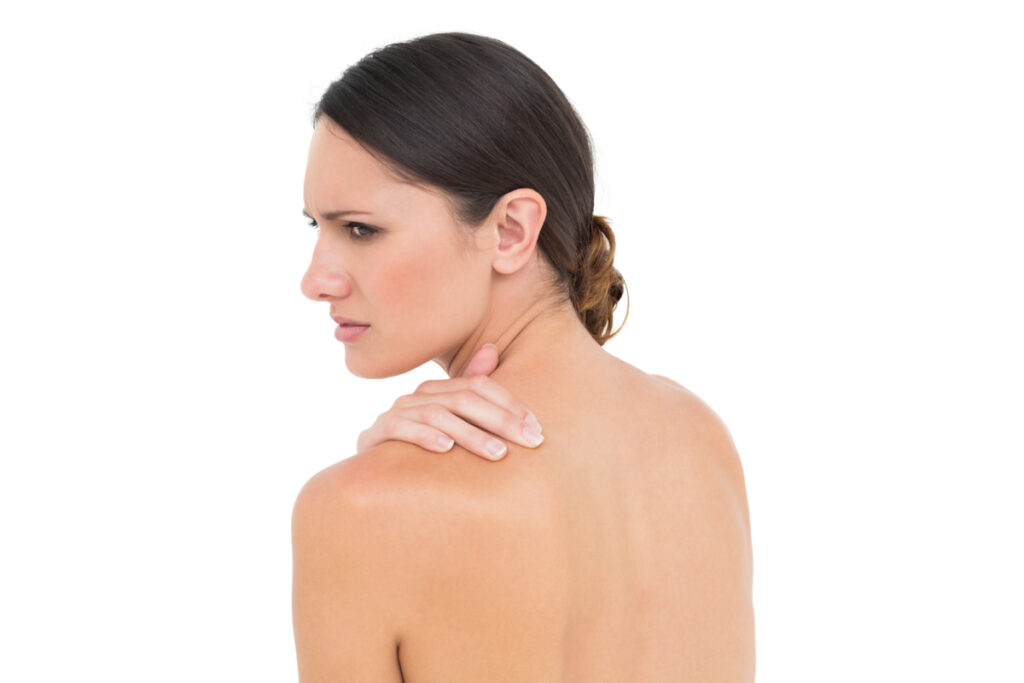Depending on your lifestyle, your job, the things you do, and how you do them, you can end up with pain in various areas of the body. One common area where you can feel pain is in your shoulders.
There are a lot of reasons why your shoulders can hurt. If you are looking for ways how to relieve the pain without taking medication, then you should try using a TENS unit for shoulder pain.
A TENS unit is a device that uses electrical current to stimulate the nerves so that you don’t feel the pain anymore. Although TENS units don’t cure or correct the cause of the pain, these little machines can help you feel more comfortable.
In this article, I’ll explain how it all works, and why you may want to try a TENS machine for shoulder pain.
How Do TENS Units Help With Pain?

TENS stands for transcutaneous electrical nerve stimulation. A TENS unit looks like a phone from the early 2000s, with an octopus of wires running from it. Each wire ends in a little electrode pad, which delivers a mild current to an area of the body.
These devices can be used as a substitute for pain relievers. Instead of chemicals and medication, this makes use of electric current.
The electric current passes through the skin and acts on the nerves. Different wavelength frequencies can be set, depending on what the shoulder or the area needs.
The electric current encourages your body to release endorphins, which are the body’s natural painkillers. It also helps stop the pain signals so that you can feel relieved.
People use TENS units for all sorts of body aches and issues. Here’s a short sample:
- TENS Unit For Knee Pain: Use a TENS Unit for Quick Pain Relief
- TENS Unit for Back Pain: TENS Therapy to Relieve Back Pain
- Will a TENS Unit Break Up Fat?
- Can You Build Muscle with a TENS Unit?
How To Use TENS Unit For Shoulder Pain

To help relieve pain in the shoulders when using the TENS unit, you should know the proper placement of the self-adhesive pads. It seems complicated, but it’s really pretty simple.
The best place to put the pads is surrounding the area where you feel pain.
When the electrodes are placed and when an electrical current is applied to a specific region, the current interferes with the pain signals your body naturally produces. If needed, you can adjust the placement of the adhesive pads to find the right area to place them for maximum pain relief.
That’s because sometimes, the best area may not be right where the pain is (a good example of this is sciatica pain).
The best place to put the pads is surrounding the area where you feel pain.
Below, I will go over the proper placement of the adhesive pads. But first, let’s go over the basics of how to use the TENS unit.
- Clean the skin where the pads are to be placed. The area must be clean and dry so that the electrical current can pass through without any interference.
- Set the machine to zero power. Most machines will allow you to make adjustments to the frequencies, intensity, and duration of the electrical current pulses.
- Place the pads on the area you want to treat. In this case, the pads are placed on your shoulders.
- Turn the machine on and slowly ramp up the power.
- If necessary, move the pads to find the right spots where they should be.
- Adjust the power so that the unit relieves pain, but does not create any discomfort.
- Let the unit run for the appropriate length of time for your injury
Shoulder TENS Unit Placement
A TENS unit will be more successful in helping you deal with your shoulder pain if you know where to properly place them. Depending on the injury you are suffering from, there are various placements for adhesive pads for your TENS unit.
Area Of Pain
To start with, the best placement for the adhesive pads for your TENS unit is surrounding the primary location of pain. Two electrode pads can be placed there side by side, straddling the locus of pain. Once you’ve placed it over that area, you can try to turn on your device and adjust it until you are relieved.
Two electrode pads can be placed there side by side, straddling the locus of pain.
In case you aren’t feeling any pain relief, you may need to move your adhesive pads. Do your adjustments until such time that you feel relieved.
Shoulder Soreness
If you have a sore shoulder, the TENS pads are usually placed over the trapezius muscle. This is the muscle found on your back shoulder area. This is the area where there is a lot of stress, which could cause your shoulders to feel sore.
Muscle Injury
For those who have a muscle injury and are feeling pain on one side, the adhesive electrode pads should be placed over the side where there is pain.
For example, if only your right shoulder hurts, you can place both pads on one side. One can be placed in a higher position than the other. Nevertheless, you can adjust the position of the pads on that side until you find relief.
Rotator Cuff Tear
Another reason for your shoulder pain could be a rotator cuff tear. There is a different placement when you have a rotator cuff tear as compared to soreness or muscle injury because the affected ones are located deeper in the tissue.
Instead of placing the adhesive pads side by side, one of the electrode pads is placed on the front side of the shoulder while the other one is placed on the backside. This is a strategic position that allows the electrical current to disrupt the pain signals so that you will feel relieved.
Types Of Shoulder Pain For TENS Unit Treatment
There can be different issues on your shoulder that could cause either chronic or acute pain. A TENS unit can be useful for the following issues:
Rotator Cuff Tear
The rotator cuff tends to be weaker as we age. If it becomes overstrained due to what we do, it can tear or rupture and cause pain in the shoulders.
Shoulder Bursitis
This is an inflammation in the shoulder due to the impingement of the subacromial bursa. The TENS machine can be used to help relieve the pain felt due to the inflamed tendons.
Pinched Nerve
This condition happens when the nerve in the shoulder is squeezed by what surrounds it. Apart from pain, it can cause numbness in the arm as well as the hand.
Frozen Shoulder
This condition is also called adhesive capsulitis. This is painful but the exact cause is still unknown. When this happens, the tendons gradually become stiff. When this happens, movement of the shoulder will result in terrible pain.
Shoulder Impingement
This is a condition that is similar to bursitis where there is inflammation in the shoulders. The impingement of the shoulder is what causes inflammation and pain.




